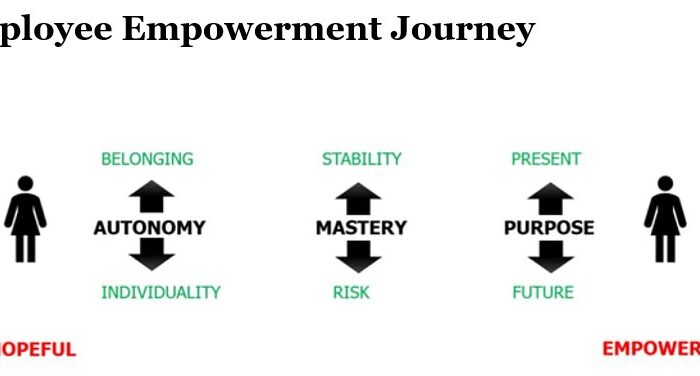Are You More Like Usain Bolt or Jacob Aldridge? In Blackboard Fridays Episode 92, Jacob talks about Leadership. Need this implemented into your business? Talk to the international business advisor who can do exactly that – Contact Jacob, Learn More, or Subscribe for Updates.
Paula Abdul taught us that opposites attract, although in business they can create more friction than is necessary. This is the third in a series of Blackboard Friday episodes where I look at behavioural indicators, to help you lead and manage your team.
Having looked at the impact of different Risk Profiles (Episode 13) and the Think Feel Know Decision Making Styles (Episode 54), I now want to introduce you to a tool that massively changed my business and personal life: The Fast-Slow “Pace” Indicator.
Some people are fast-paced – if you’ve ever watched an interview with Usain Bolt, you’ll now speed extends beyond his running ability. Some people are slow-paced – and this is definitely me, because slow doesn’t mean ‘tardy’ it means ‘slow and steady wins the race’.
(Indeed, to overcome the misperception that ‘fast is better’, this balance is often described in the terms of Silicon Valley’s Paul Graham, who talks about ‘Manager’s Time versus Maker’s Time‘. It’s a topic I’ve written about previously as well. “Pace” has even become one of my company’s Core Values!)
Like Risk and TFK, there is no right or wrong, only awareness and responsibility. To a fast-paced person, my methodical style can seem stubborn; to a slow-paced person, the life of a salesperson or manager can seem scattered and unfocused.
Watch this week’s episode to learn more. And click here to take your ‘Pace’ Indicator – manage yourself and your team to their natural pace and you’ll find improved energy and results all around.
Who is Jacob Aldridge, Business Coach?
“The smart and quirky advisor who gets sh!t done in business.” Back independent since 2019.
Since April 2006, I’ve been an international business advisor providing bespoke solutions for privately-owned businesses with 12-96 employees.
At this stage you have proven your business model, but you’re struggling to turn aspirations into day-to-day reality. You are still responsible for all 28 areas of your business, but you don’t have the time or budget to hire 28 different experts.
You need 1 person you can trust who can show you how everything in your business is connected, and which areas to prioritise first.
That’s me.
Learn more here. Or Let’s chat.
Transcript
The fastest man in history Usain Bolt ran a hundred meters in 9.54 seconds. A marathon runner takes 20 seconds to cover the same distance: twice the time, but they do four hundred and twenty two of them in a row!
On a physical level, we can see that some people are faster paced – they’ve got fast twitch fibers, and that’s why Usain Bolt has those incredible legs to get up off the blocks and go go go! But don’t expect him to run more than 200 meters before he crashes with exhaustion. A marathon runner has slow twitch fibres – they can’t run as fast, they don’t have as much impulsive power, but they can go and go and go and go!
Guess what! There’s a business application for that concept.
Sometimes we call that “Fast and Slow”. It’s also been characterized out of Silicon Valley as “Managers versus Makers”, and let’s have a talk about this because knowing whether you are naturally a manager or a maker and knowing the makeup of your team gives you an idea of how to better manage and lead your business.
Now Fast and Slow are not judgmental terms. Being Fast is not always best, as we’re often told slow and steady wins the race. It’s about achieving the right balance for your business and managing your time and your energy to be at peak performance – whether that’s 9.54 seconds or over 42.2 kilometers.
I will caveat this by saying that the best way to understand your pace is by doing the indicator. You can go online and that will give you a score for your Natural Pace, somewhere along a continuum from 0-100. Most of us sit somewhere in the middle. We’re not in the top 20% of fast paced people like Usain Bolt, and we’re not in the bottom 20% of slow paced people like a Eliud Kipchoge, but we will still have tendencies and preferances.
How do these show up in business
Let’s talk about a fast-paced person.
A fast-paced person when given a to-do list will often jump straight in. They will start a whole lot of different tasks, and go back and forth over the course of the day in order to get them completed.
A slow paced person with the same to-do list will often triage, and work out which of those is the number-one priority. They will start and finish that task to completion before they move on to the next one. They will get the same tasks done usually in the same amount of time – being slow doesn’t mean being tardy, it’s just a much more methodical process.
If you interrupt a slow person, if you try and get them to bounce between tasks, they will be far less efficient. Similarly if you’ve got a fast-paced person and told them that they were only allowed to do this one thing for the next four hours THEY would be less efficient.
When a fast pace or a slow paced person thinks of their time, thinks of their day at work, they will view it in different chunks based on their different pace. A fast-paced person will often see their day split up into half-hour or one hour blocks – this is where Paul Graham’s analysis of these as “managers” comes into play because a manager will often go from meeting to meeting, from a one-on-one or sales meeting, and they will do it effortlessly. Indeed, they often prefer to bounce from one to the other to the other, crossing off little bits of tasks along the way.
The slower paced person (like me! I am one of the rare “bottom 20% for slow” people, and I definitely empathize with the maker time) sees their day in half day blocks. Speaking from my experience, I have “a morning” and I have “an afternoon”. Most of my coaching sessions with clients run for half a day – I get half a day of dedicated focus on them and their business. And many of my entrepreneurial clients need to have teams involved with those because they can’t personally sit still and focus for that period of time!
One thing that ruins a slow-paced person’s day more than anything is a short meeting in the afternoon. We will spend the entire day with the back of our mind saying “don’t forget that meeting, don’t forget that meeting”. If you’re nodding along right now thinking “that’s my reality”, then congratulations – you’re a slow-paced person, welcome to the club.
If you are laughing at how ridiculous I sound where one short meeting can ruin a whole day’s productivity, then congratulations – you’re a fast-paced person!
Which is better – Fast or Slow Paced employees?
Like all of these Behavioral Indicators that I’ve talked about and run with teams over the over the years, there’s no right or wrong and there’s no better or worse.
The key principle is understanding your natural preference and the natural preference of your team.
One more element around the Pace indicator: if you do go online and do that, which I recommend, you will get a breakdown across different areas. You can have a look at your pace at work and your pace in leisure time, and compare those to your natural pace.
If they are all out of whack you are going to be stressed, exhausted, and you are not going to be productive at work or be a happy spouse or parent at home.
Some people get a balance – they’re super fast at work go go go go go all day, and they spend their weekend lounging on the couch watching Netflix. Or vice versa – they’ve got a pretty boring mundane job, but on the weekends they go skydiving!
For most of us it’s about trying to cluster those three – Work, Leisure, and Natural – so that we’re never being pulled too far. We’re never being pushed to be too fast, or to be too slow, forced to be out of tune with our energy.
So what’s your pace? What’s the pace of the team you work with? And across your team, across your business, are you set up to support both Fast AND Slow, both Managers AND Makers?
Or are you constantly shaking the energy of your entire team, and reducing productivity as a result?
Next Steps
Want to learn more about how this can apply to your business? It costs nothing to chat:
- Email me jacob@jacobaldridge.com (I read them all)
- Call, Text, or WhatsApp me +61 427 151 181
- Or just Subscribe https://jacobaldridge.com/about/subscribe-to-jacob-aldridge-com/ to stay in touch





[…] you manage people … or even just work with people, this is a valuable read [2018 Update – you can now watch me discuss it’s application in this video and article]. In fact, if you’re time poor, my advice is to go and read the essay rather than my musings […]